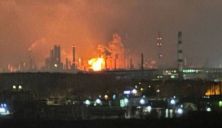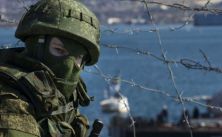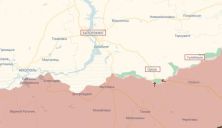Long-range restrictions – what exactly and what is a new range? Why now? Can they be casted back when Trump returns to power? Our expert Maksym Dzhyhun online will explain you this topics.
— Long-range restrictions lifted—thank God, that’s good. But which weapons, specifically, and what is the new range?
— Yes, as we understand, we now have access to 300-kilometer-range ATACMS systems. This enables Ukraine to send our “love” to Russia on their territory, targeting various military facilities in their regions. This capability enhances our ability to defend our land and is a significant boost, thanks to our American partners. We hope European allies follow suit, although it depends not just on approval but on the availability of these rockets to sustain operations on Russian territory.
— You mentioned European allies. Germany has been hesitant. Do you think this will change?
— Unfortunately, I don’t see much chance of progress under Chancellor Olaf Scholz. However, Germany’s opposition seems more willing to support Ukraine with various military systems. Next year, Germany will likely elect a new chancellor, and the opposition’s stance on finalizing this war on Ukrainian terms could play a critical role in their campaign. Elections are scheduled for February 23, 2025, and this topic will be pivotal in shaping Germany’s future policies.
— Why was the restriction on long-range weapons lifted now? Was it Biden’s decision, Trump’s influence, or global factors like North Korea?
— Over the three years of this war, many initial restrictions by our allies have been gradually lifted—starting with tanks, then F-16s. These decisions were often tied to efforts to negotiate or de-escalate with Russia, but they proved ineffective.
This latest decision likely came after several escalatory actions by Russia, including attacks on Ukrainian energy infrastructure and evidence of North Korean troops in Russian-occupied territories, like Kursk oblast. These events, combined with renewed missile strikes, might have convinced President Biden and leaders like Macron and Starmer to approve long-range weapons.
However, this decision comes late. If we had received these weapons six months or a year ago, we might be in a better position now, with fewer losses in territory and lives. Delays have cost Ukraine dearly—not just in human terms but financially, both for us and our partners supporting us.
— A very detailed and insightful response. Let’s talk about Trump. His son recently commented on the situation, criticizing Biden’s decisions and implying Trump could reinstate restrictions if he returns to the Oval Office. Is this plausible?
— It’s possible. Biden likely lifted the ban partly to complicate Trump’s potential return. Trump’s past rhetoric has suggested a willingness to end the war quickly, even at Ukraine’s expense. A new administration could undo much of the current progress.
Trump could push Ukraine into unfavorable negotiations with Russia or, conversely, strengthen our position. It depends on the initial dynamic between him and Putin. Either way, this war’s trajectory will heavily depend on the approach of the next U.S. administration.
Read also: Interview with Marine Scout Sniper Matthew Sampson Live on UATV










